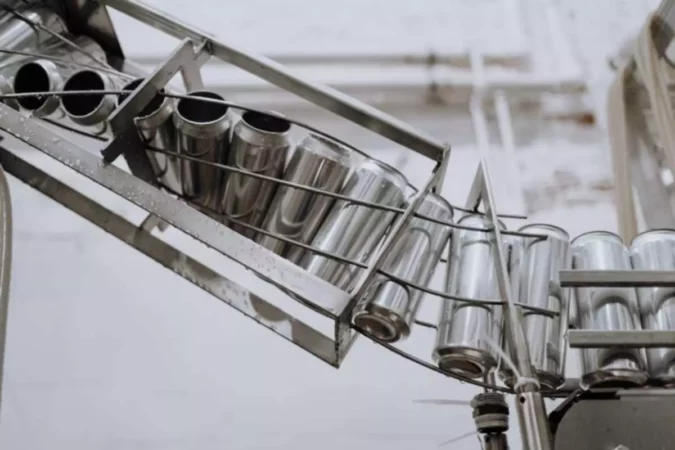Overview
The emergence of this concept dates back to the late 1950s, when the Japanese company Toyota Motors, and then other automobile manufacturers in Japan began to actively implement the KANBAN system. The original goal of the JIT concept was to eliminate potential stocks of materials, components, and semi-finished products in the production process of assembling cars and their main units.
The initial task looked like this: if a production schedule is set, then it is necessary to organize the movement of material flows so that all materials, components, and semi-finished products arrive in the right amount, to the right place (on the assembly line) and exactly on time for the production or assembly of finished products. With this formulation of the matter, large safety stocks that freeze the business’s funds turned out to be unnecessary.
With the implementation of this inventory system, the demand for production is formed by the market (customer), which literally pulls the product from the last stage of production assembly. This serves as a signal for the continuation of the production cycle, where each worker immediately pulls the next part from the previous section of the material flow to replace the part removed.
The section from which the part is taken, in turn, pulls out the now missing part from the previous section, and so on, up to the pulling out of the raw material. In order to ensure the continuity of such a process, JIT requires high-quality products at every stage of the process, clear fulfillment by suppliers of their contractual obligations, and correct forecasting of demand for finished products.
The Just-in-time inventory method has proven to be so effective that all large organizations now use elements of this approach to one degree or another. The traditional approach to organizing work assumes that inventory is an important element of the entire system, ensuring that operations are not interrupted.
JIT reduces inventory by using the master schedule in such a way as to provide a closer match between supply of materials and demand for them, while still maintaining some safety stock in case of unforeseen problems. Obviously, the higher the degree of match between supply and demand is ensured, the less stock is required. If the business can completely eliminate the supply-demand mismatch, it won’t need inventory at all. The work of the Just-in-time inventory system is based on this.
Implementation
There are several elements management should work on to implement this system into its operations. Let’s quickly review each.
- Stocks. Organizations must identify what causes the accumulation of stocks, striving for a minimum (zero) amount of materials, work in progress, and finished goods.
- Quality. It is necessary to achieve not an acceptable level of defects, but their complete absence on the basis of integrated quality management.
- Suppliers. Businesses must be able to fully rely on their suppliers, so they need to establish long-term partnerships with a small number of reliable suppliers and carriers.
- Production batch size. It is necessary to look for ways to reduce the volume of production batches, to achieve short production cycles so that the surplus of production does not accumulate in stocks of finished products.
- Lead time. It is necessary to reduce lead times, which is the total time required to manufacture an item, to reduce the uncertainties that can change the situation during long delivery times.
- Reliability. All operations must be performed continuously without interruption, i.e. there should be no equipment breakdowns, defects, etc.
- Workers. Cooperation is needed, both among workers and between managers and workers, since the work efficiency and effectiveness of all depend on the general success in work; all employees should be treated equally and fairly.
- Any creative initiative expressed by any employee regarding possible improvements in work is encouraged.
- Support of easy communication should allow for the prompt exchange of information and synchronize all the processes of supply of materials, production and assembly, and supply of finished products.
The main mechanism of the inventory management system is the implementation of the feedback principle, which ensures the receipt of data on the new state of the entire system and evaluates the effectiveness of its functioning. The system will be controllable if it is possible to determine its new state, evaluate it, and, taking into account the received new data about the system, take the next action to improve it.
At the first level of the system, information about the movement of goods and work with customers on the shipment of goods is accumulated. The second level consists of various models of inventory management, using the necessary equipment and programs to assess the current state of inventory reserves and develop recommendations for their effective management.
At the third level is the financial management model and rules that allow you to control the financial state of stocks. The financial sources for their acquisition and the general financial strategy of inventory management are determined. Accordingly, Just-in-Time inventory is not only a way to minimize stocks, but also to eliminate waste for all types of resources, improve coordination, and increase efficiency.
Conclusion
Just-in-time inventory systems are mainly used in mass production. In such a system, goods move through the system, and tasks are performed strictly according to a schedule. The ultimate goal of JIT is balanced and smooth production. In addition, companies implement this system to:
- eliminate system disruptions
- ensure system flexibility
- reduce equipment and lead times
- eliminate overheads
- minimize inventory.
Production that adheres to the Just-in-Time inventory system requires the elimination of all elements that may interfere with smooth operation. High quality is essential because quality problems can disrupt the process. The key benefits of the precision system are reduced inventory levels, high quality, flexibility, reduced production times, increased productivity and equipment utilization, fewer scrap and processing, and less space usage.


















